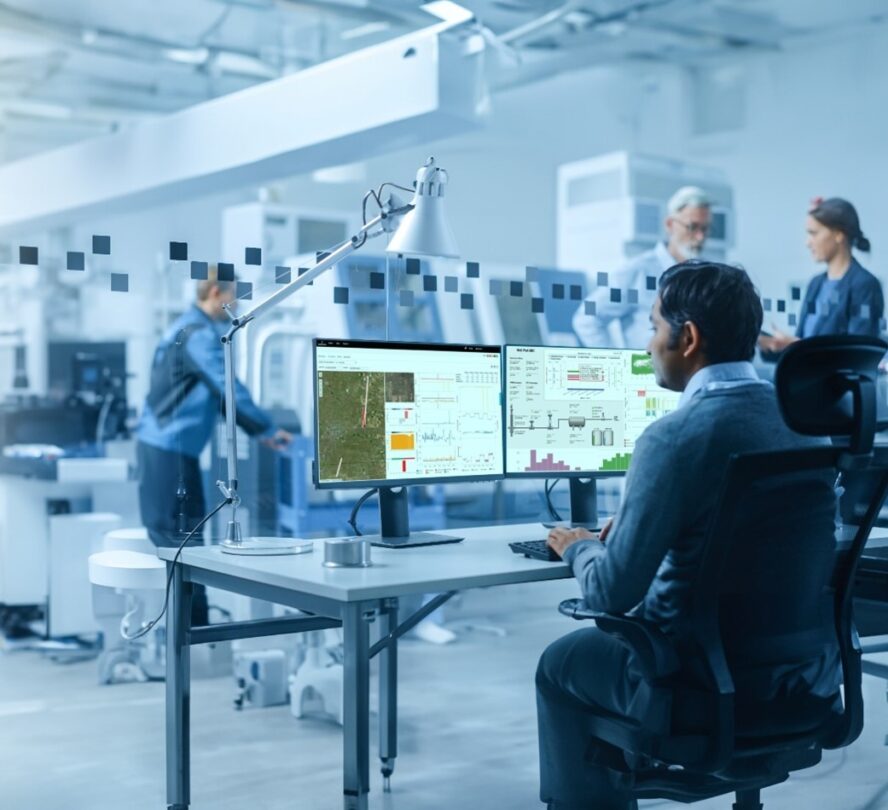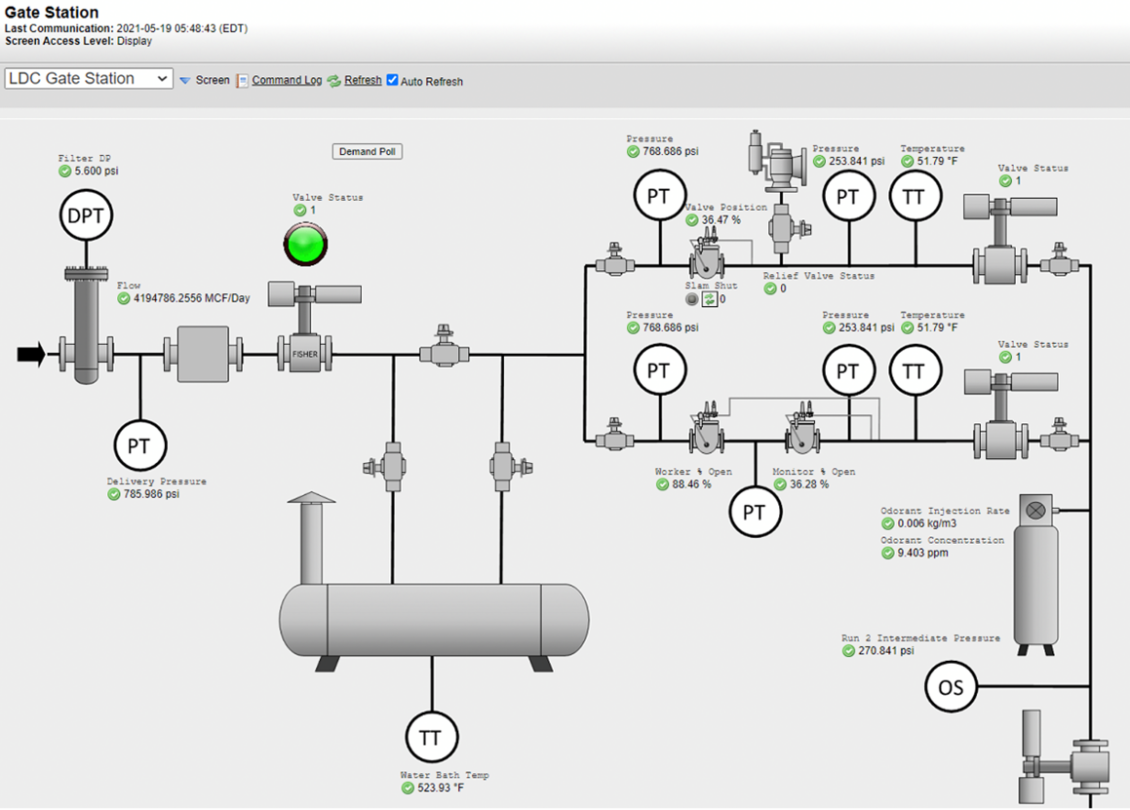Modern supervisory control and data acquisition (SCADA) systems help to optimize the management of ‘big data’. This blog post explains that there are two main types of SCADA system – on-premises and cloud-based – and describes the differences between them and the benefits they can achieve.
 Organizations want to extract greater value from their operating data, but outdated automation architectures can be data barriers that prevent improvements in production, reliability, safety and sustainability. To address this challenge, liberate data and enable powerful software to use the data to help optimize operations, Emerson continues to develop technologies that serve as a foundation for boundless automation. That means having the flexibility to deploy software across the intelligent field, at the edge and in the cloud, with a unifying data fabric to connect those domains and ensure the flow of information to people and optimization software. An example of this is Emerson’s DeltaV™ SaaS SCADA (formerly Zedi SaaS SCADA), that utilizes infinite computing power, attractive lifecycle costs and on-demand support and service.
Organizations want to extract greater value from their operating data, but outdated automation architectures can be data barriers that prevent improvements in production, reliability, safety and sustainability. To address this challenge, liberate data and enable powerful software to use the data to help optimize operations, Emerson continues to develop technologies that serve as a foundation for boundless automation. That means having the flexibility to deploy software across the intelligent field, at the edge and in the cloud, with a unifying data fabric to connect those domains and ensure the flow of information to people and optimization software. An example of this is Emerson’s DeltaV™ SaaS SCADA (formerly Zedi SaaS SCADA), that utilizes infinite computing power, attractive lifecycle costs and on-demand support and service.
Modern supervisory control and data acquisition (SCADA) systems play a vital role in helping organizations make optimal use of the valuable operations data generated by today’s intelligent sensors and automation equipment. Managing vast amounts of ‘big data’ can be challenging but SCADA systems enable clear, actionable information to be presented to the right personnel at the right time, facilitating improved business decisions.
In an article in International Process Engineer magazine, I describe the two main types of SCADA systems – on-premises and cloud-based – the differences between them, the kind of applications best suited to each and the benefits they can provide.
The article begins by looking at the history of on-premises SCADA systems, which were developed in the early 1970s to provide remote access to a variety of local control modules through standard automation protocols. In those times, SCADA had a control system architecture comprised of computers, networked data communications, and graphical user interfaces used for high-level supervision of machines and processes. I then explain that:
…large SCADA systems have become very similar to distributed control systems in terms of their function, while providing multiple means of interfacing with a manufacturing plant or locally housed assets. The technology has evolved and now includes a wide range of features aimed at improving efficiencies, increasing safety, and enabling better operational and business decisions.
The article describes the first generation of SCADA systems as independent, proprietary systems, with another mainframe acting as the back-up for connection to the remote terminal sites in case of failure. It continues:
…Advancements came through transforming the information and command processing from a central unit to a distributed network, where each station was responsible for a particular task. This improved resiliency and safety. However, there were no considerations given to security, long-term costs to maintain, or standardization at that point. Subsequent iterations of SCADA systems focused on improving these aspects, using a ‘networked’ systems approach. This allowed SCADA to be spread across more than one local area network and separated geographically using a process control network.
 Cloud-based SCADA
Cloud-based SCADA
I then describe how cloud-based SCADA systems change where software and data are located, and who is typically responsible for the security, performance, maintenance and control. Some of the benefits they provide include simplified site installation, reduced operating costs, and the ability for users to access the system from internet-connected devices such as mobile phones and tablets.
…On-premises SCADA houses the software and data at the plant or asset site, and the entire scope of the hardware, software and architecture is owned and managed by the operator. Cloud-based SCADA, on the other hand, runs off web-based applications, where its management, including updates and security, is generally handled by the SCADA provider, who also takes on ownership and operation of the hardware, servers and software.
On premises SCADA is ideally suited to companies with resources to manage their systems and operate assets that are generally located in close proximity and of high sophistication. Cloud based systems are ideal for operators of multiple disparate, remotely located assets spread over large distances.
…Cloud-based SCADA is an attractive proposition for modern industries such as sustainable hydrogen production and solar power generation. Typically, assets are quite small and dispersed and deploying SCADA at these sites is not possible because infrastructure such as data networks, servers and IT rooms is not available.
Cloud-based SCADA systems enable the outsourcing of all hardware, software, and security ownership and management responsibilities. The cloud-based SCADA provider becomes responsible for keeping the system running 24/7 as well as handling all the maintenance, data back-ups and continual software improvements, without causing disruption to normal operations. The article continues:
…A software-as-a-service (SaaS) model ensures the most up-to-date software, but the end user can focus on their main business, while reducing costs, personnel requirements and risk exposure. It is also worth noting that installing on-premises software on an organization’s server, PCs and laptops, can be quite time-consuming. Cloud-based software, on the other hand, can be deployed over the internet in just hours.
Security is essential. Organizations that adopt an on-premises system will usually have a team focused on security to ensure the appropriate security functions are in place. A cloud-based solution such as Emerson’s DeltaV SaaS SCADA benefits from utilizing IT resources dedicated to providing cyber security. The article states:
…The Zedi IIoT (Industrial Internet of Things) platform was ‘born in the cloud’ meaning it was developed from the ground up within a cloud system and runs on Microsoft Azure. Microsoft has over 3500 experts who are completely focused on security, helping to provide peace of mind to your organization. In terms of the data networks, the connections are encrypted and secured from the communication device back to the Zedi platform infrastructure through dedicated access point names and virtual private networks. To further safeguard data, real-time customer data back-ups are performed.
To learn more about DeltaV SaaS SCADA, visit www.emerson.com/en-us/automation/control-and-safety-systems/scada-systems/zedi-saas-scada.



